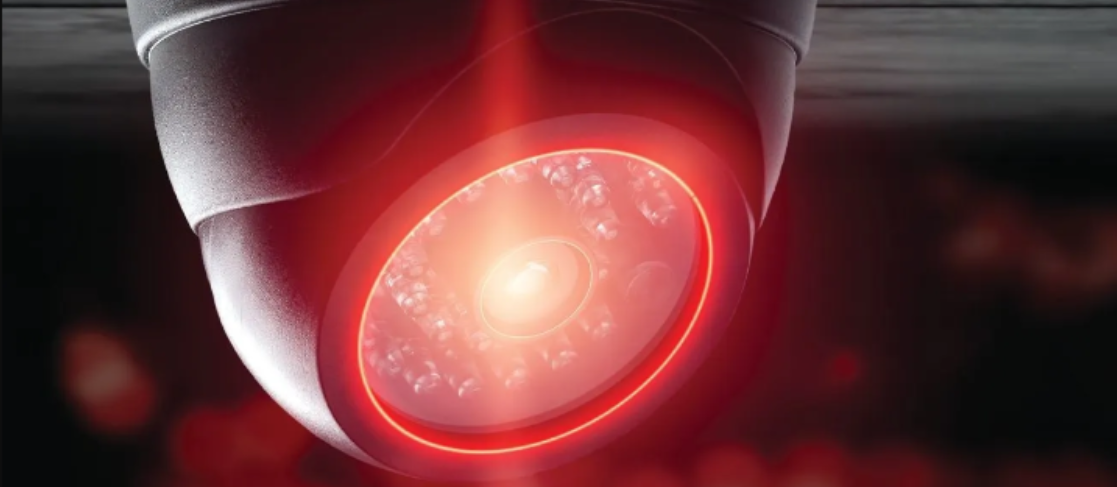A Modern Approach
O&M in a hospital environment

Health care facility management is crucial for ensuring that hospitals operate smoothly and safely, playing a pivotal role in health care delivery. It involves maintaining hospital infrastructure, such as buildings, medical equipment and support systems. Regular inspections and proactive maintenance programs are essential to detect and address potential issues before they disrupt patient care. For example, FMs oversee the upkeep of HVAC systems to ensure optimal air quality and temperature control in patient rooms and surgical suites, which are vital for patient comfort and infection control.
Compliance with regulatory standards and accreditation requirements is another vital responsibility of hospital FM. Health care facilities must adhere to stringent regulations set forth by agencies such as the Joint Commission and Centers for Medicare & Medicaid Services to maintain licensure and accreditation. FMs collaborate with clinical staff and administrators to ensure that hospital meet these standards, conducting regular audits and implementing corrective actions to mitigate risks and maintain compliance.
Resource optimization is a critical priority for hospital FM, covering energy efficiency, waste management and sustainable practices. Hospitals are embracing technologies that promote energy efficiency and sustainable building designs to cut operational costs and shrink environmental footprints. Measures like installing LED lighting and upgrading HVAC systems not only decrease electricity use but also support sustainability objectives by curbing greenhouse gas (GHG) emissions. FMs are pivotal in driving these efforts, ensuring that hospital operations align with organizational objectives for economic efficiency and environmental stewardship.
Maintenance of physical infrastructure
Maintaining physical infrastructure in hospitals is essential to ensure the smooth operation of health care facilities and the safety of patients and staff. This encompasses a broad spectrum of tasks, including the upkeep of buildings, utilities and medical equipment. Regular inspections and preventive maintenance routines are critical to identifying potential issues early and addressing them proactively. FMs oversee these efforts, ensuring that structural integrity is maintained and that potential hazards, such as leaks or electrical faults, are promptly addressed to minimize disruptions to patient care.
One significant aspect of infrastructure maintenance involves managing specialized medical equipment to ensure its reliability and functionality. Maintenance schedules are meticulously planned to comply with manufacturer recommendations and regulatory requirements, guaranteeing that equipment operates at peak performance levels and meets safety standards. This proactive approach not only reduces the risk of equipment failures during critical patient procedures but also extends the lifespan of costly medical assets.
In addition to reactive maintenance and equipment upkeep, FMs also oversee capital improvement projects aimed at modernizing and upgrading hospital infrastructure. By staying ahead of infrastructure needs and leveraging technological advancements, hospitals can maintain high standards of health care service while optimizing operational efficiency and cost-effectiveness.
Automation & control systems
Automation and control systems play a crucial role in enhancing operational efficiency and safety within hospital operating rooms (ORs). These advanced technologies are integrated into various aspects of OR management to optimize workflow and ensure precise control over environmental conditions. For example, automated HVAC systems in ORs are designed to maintain strict temperatures and humidity levels that are essential for surgical procedures. These systems continuously monitor and adjust conditions based on real-time data, ensuring a sterile environment that supports infection control protocols and promotes optimal surgical outcomes.
Furthermore, automated lighting and audiovisual systems in ORs enhance surgical precision and efficiency. Lighting controls allow surgeons to adjust brightness and focus during procedures, optimizing visibility and reducing eye strain. Integrated audiovisual systems provide real-time monitoring and recording capabilities, facilitating collaboration among surgical teams and enabling remote consultations or training sessions. These technologies not only improve the quality of care by enhancing communication and workflow but also by contributing to patient safety and operational effectiveness.
Moreover, automated inventory management systems streamline the supply chain process, ensuring that surgical instruments, medications and other essential supplies are readily available when needed. These systems use radio frequency identification or barcoding technology to track inventory levels, expiration dates and usage patterns, enabling efficient resource allocation and waste minimization. By integrating automation and control systems into OR management, hospitals can achieve significant improvements in patient care quality, operational efficiency and overall health care delivery outcomes.
Regulatory compliance & accreditation
Hospital FM staff plays a critical role in ensuring regulatory compliance and accreditation, which are essential for maintaining operational standards and patient safety. Regulatory requirements include building codes, fire safety, infection control and environmental regulations. FMs must stay abreast of these regulations through continuous training, updates and routine inspections to ensure that hospital facilities meet or exceed the prescribed standards.
Accreditation processes require facilities to undergo thorough assessments to demonstrate compliance with quality and safety standards. FM staff collaborate with clinical teams and administrators to prepare for accreditation surveys, ensuring that all documentation, policies and procedures are in place and adhered to. By maintaining meticulous records and implementing proactive maintenance and safety protocols, FMs not only facilitate successful accreditation but also contribute to a culture of continuous improvement of hospital operations and patient care outcomes.
Hospital’s FM staff members are tasked with navigating complex regulatory landscapes to ensure ongoing compliance and accreditation readiness. This responsibility involves implementing comprehensive strategies that encompass regular audits, training programs and documentation practices. For instance, FMs conduct routine audits to assess compliance with building codes, environmental health standards and infection control protocols. These audits not only identify areas for improvement but also serve as proactive measures to mitigate risks and uphold patient safety.
Training and education are integral components of maintaining regulatory compliance within hospital facilities. FM staff undergo continuous training to stay up to date on evolving regulations and best practices in health care FM. Training programs cover topics such as emergency preparedness, hazardous materials handling and compliance with health care-specific regulations. By ensuring that staff are knowledgeable and proficient in regulatory requirements, hospitals can proactively address compliance issues and foster a culture of accountability and professionalism across all departments.
Collaboration with clinical teams and administrators is essential for achieving and maintaining accreditation. FMs work closely with clinical leaders to align operational practices with accreditation standards, ensuring that patient care environments meet rigorous quality and safety criteria. This collaborative approach includes conducting mock surveys, reviewing policies and procedures and implementing corrective actions needed to address identified deficiencies. By fostering a team-oriented approach to accreditation readiness, hospitals not only enhance their operational efficiency but also elevate the overall quality of care delivered to patients.
Innovative approaches in hospital FM
Predictive Maintenance
Predictive maintenance is leading the way in hospital FM by utilizing advanced data analytics and machine learning to forecast equipment failures before they occur. By analyzing historical data, sensor readings and operational parameters, hospitals can detect early signs of potential issues in critical medical equipment such as ventilators and HVAC systems. This proactive approach allows FMs to schedule maintenance during optimal periods, minimizing disruptions to clinical operations and ensuring continuous availability of essential health care services.
Implementing such proactive maintenance strategies not only enhances operational reliability but also generates significant cost savings over time. By addressing maintenance needs based on predictive insights, hospitals can extend the life span of expensive medical equipment and reduce the need for costly emergency repairs. This strategic approach optimizes resource allocation and maximizes the efficiency of maintenance teams, enabling them to focus on preventive measures rather than reactive fixes. This approach supports high standards of patient care by ensuring that critical equipment remains operational and ready to use when needed most.
Furthermore, integrating advanced analytics and machine learning into maintenance practices fosters a culture of continuous improvement within hospital FM. FMs can refine maintenance strategies based on real-time data and performance metrics, allowing hospitals to adapt swiftly to changing operational demands and technological advancements. This iterative process enhances overall operational resilience, positioning hospitals at the forefront of efficient and proactive health care FM. As hospitals embrace digital transformation, these predictive maintenance strategies play a pivotal role in optimizing operational efficiency and patient care outcomes.
Real-world case studies illustrate the transformative impact of predictive maintenance in health care settings. For example, a major hospital implemented predictive maintenance algorithms for their cardiac monitoring systems, resulting in a 30 percent reduction in equipment downtime and a 20 percent decrease in maintenance costs annually. Such success stories underscore the importance of integrating predictive analytics into hospital FM practices, not only for enhancing operational efficiency but also for enhancing patient safety and satisfaction. As hospitals embrace digital transformation and innovative technologies, predictive maintenance stands out as a crucial tool in their arsenal to deliver high-quality, uninterrupted health care services to their communities.
Reliability-centered maintenance
Expanding on the use of predictive maintenance is reliability centered maintenance (RCM), a systematic approach to maintenance planning that optimizes the reliability and performance of critical assets within facilities. Unlike traditional maintenance strategies that rely on fixed schedules or reactive responses, RCM focuses on identifying the specific functions and potential failure modes of each asset. By analyzing the consequences of failure and the likelihood of occurrence, FMs can prioritize maintenance tasks based on risk and criticality. This proactive approach ensures that resources are allocated efficiently, with preventive actions targeted at mitigating the most significant risks to patient care and operational continuity.
The key principles of RCM include understanding the functional requirements of equipment, systems and facilities, identifying failure modes through thorough analysis and selecting the most appropriate maintenance strategies. Hospitals apply RCM methodologies to minimize downtime and ensure reliable performance. For instance, RCM may involve developing detailed maintenance plans for life-support systems, surgical instruments and HVAC units, tailored to each asset’s specific operational context and criticality to patient care.
RCM also emphasizes continuous improvement and adaptation based on performance feedback and operational data. By monitoring asset metrics and analyzing outcomes, FMs can refine maintenance strategies over time to enhance asset performance and reliability. This iterative process supports hospitals in maintaining high standards of patient safety and care delivery while optimizing operational efficiency and cost-effectiveness. RCM promotes a strategic approach to maintenance management that aligns with health care facility goals of reliability, safety and operational excellence.
Benchmarking & performance metrics
Benchmarking and performance metrics play pivotal roles in optimizing operations and maintenance within hospital environments. Benchmarking involves comparing key performance indicators (KPIs) and practices against industry standards or best-in-class peers to identify areas for improvement. For instance, hospitals can benchmark metrics such as energy consumption per square foot, maintenance costs per bed or patient satisfaction scores against similar institutions. By adopting benchmarking practices, hospital FMs can pinpoint inefficiencies, make informed decisions regarding resource allocation, prioritize areas for enhancement, set realistic performance goals aligned with organizational objectives and implement targeted improvements.
Performance metrics complement benchmarking by providing quantitative measures of efficiency and effectiveness in hospital FM. These metrics encompass a wide range of parameters, including the uptime of critical medical equipment, response times for maintenance requests, compliance with regulatory requirements and overall operational costs. Through systematic data collection and analysis, hospitals can track performance trends, identify deviations from established benchmarks and swiftly implement corrective actions to maintain high standards of service delivery and operational excellence. Together, benchmarking and performance metrics empower hospital administrators and FMs to drive continuous improvement initiatives that enhance patient care outcomes while optimizing operational efficiency and sustainability efforts.
Energy efficiency & sustainability initiatives
Many hospitals are adopting renewable energy sources, energy-efficient building designs and sustainable practices to reduce their carbon footprint and operating costs.
Energy efficiency and sustainability initiatives are increasingly vital in hospital FM, driven by the dual imperatives of reducing operational costs and minimizing environmental impact. Hospitals are adopting strategies to achieve these goals, including energy-efficient building designs that incorporate technologies like LED lighting, advanced HVAC systems and smart controls. These initiatives not only lower energy consumption but also enhance indoor air quality (IAQ) and patient comfort, contributing to a healthier healing environment.
Additionally, hospitals are investing in renewable energy sources such as solar panels and geothermal systems to generate clean energy onsite, further reducing their reliance on fossil fuels and mitigating GHG emissions.
Sustainability efforts extend beyond energy conservation to encompass comprehensive waste management programs and sustainable procurement practices. Hospitals are implementing recycling initiatives for medical waste, utilizing eco-friendly materials in construction and operations and prioritizing suppliers with robust environmental stewardship practices. By embracing sustainability as a core principle, hospitals not only demonstrate corporate social responsibility but also position themselves as leaders in health care innovation, fostering community trust and enhancing their reputation as sustainable health care providers.
As these initiatives continue to evolve, hospitals are poised to achieve significant cost savings, regulatory compliance and long-term resilience in the face of global environmental challenges. In addition to energy efficiency and waste management, hospitals are focusing on water conservation as a critical component of their sustainability initiatives. Water is a precious resource, and hospitals are implementing technologies such as low-flow fixtures, water-efficient landscaping and reclaimed water systems to minimize consumption and reduce strain on local water supplies.
These efforts not only lower operational costs but also contribute to environmental stewardship by mitigating the ecological impact of hospital operations. Patient safety and comfort are paramount in hospital environments, and sustainability initiatives also contribute significantly to these aspects. Hospitals are adopting design principles that prioritize natural light, IAQ and thermal comfort, which not only enhance the healing environment but also support overall patient well-being. Sustainable building materials and practices reduce environmental impact and contribute to creating spaces that promote faster recovery and improved patient outcomes. By integrating sustainability into their facility design and management, hospitals are not only meeting regulatory requirements but also enhancing patient care experiences and fostering a healthier community for all stakeholders.
Collaboration & integration in FM
Cross-functional collaboration is essential in hospital FM because it brings together diverse teams and stakeholders to align operational goals with patient care objectives. Effective collaboration between FM teams, clinical staff, administrators and external partners fosters a cohesive approach to problem-solving and decision-making. By integrating perspectives from different departments, hospitals can optimize resource allocation, streamline processes and enhance overall operational efficiency. For example, collaborative efforts can lead to more efficient facility layouts that improve workflow for health care providers, reduce patient wait times and enhance the overall patient experience.
Furthermore, cross-functional collaboration facilitates the implementation of innovative solutions and best practices across hospital departments. For instance, integrating technology platforms and data management systems allows for real-time monitoring of facility operations and proactive management of maintenance and safety protocols. By sharing insights and expertise, teams can leverage each other’s strengths to address complex challenges such as regulatory compliance, sustainability initiatives and the integration of new health care technologies.
Integration of technology & data
FM teams are leveraging advanced technology and data-driven solutions to enhance operational efficiency and patient care. One prominent example is the adoption of Integrated Workplace Management Systems (IWMS), which streamline FM processes by centralizing data related to space utilization, asset management, maintenance schedules and regulatory compliance. IWMS platforms enable FMs to make informed decisions based on real-time insights, improving resource allocation and optimizing workflow across hospital departments. For instance, these systems can automate work order management, track equipment performance and ensure compliance with safety standards, thereby reducing operational costs and enhancing overall facility performance.
Another example of technology integration in hospital FM is the use of Internet of Things (IoT) devices and sensors to monitor environmental conditions, equipment status and patient safety in real-time. IoT-enabled solutions provide FMs with actionable data to preemptively address issues before they escalate, ensuring uninterrupted health care services and maintaining high standards of patient care. For example, sensors can monitor temperature and humidity levels in critical areas such as ORs or storage facilities, alerting staff to potential risks and allowing for prompt intervention. By harnessing the power of technology and data integration, hospital FM teams can achieve greater operational transparency, efficiency and resiliency in adapting to evolving health care demands and regulatory requirements.
Conclusion
The modernization of hospital FM through advanced approaches, such as predictive maintenance, energy efficiency initiatives, cross-functional collaboration and integration of technology and data, is pivotal for enhancing operational efficiency, reducing costs and improving patient outcomes. By implementing proactive maintenance strategies and leveraging predictive analytics, hospitals can optimize resource utilization and minimize downtime, thus effectively stretching budgeted dollars. Energy efficiency and sustainability initiatives not only lower operational expenses but also contribute to environmental stewardship, aligning hospitals with global sustainability.
The integration of technology and data-driven solutions, such as IWMS and IoT devices, empowers FMs to make informed decisions based on real-time insights, enhancing operational transparency and efficiency. These innovations not only support compliance with regulatory standards but also facilitate proactive maintenance and ensure an optimal environment for patients and staff. As hospitals continue to embrace these modern approaches, they position themselves to navigate future challenges effectively while delivering high-quality health care services.

Anthony Ortery brings more than 25 years of invaluable experience in hospital operations and facilities management to his role as director of business development for Red E Services. Beginning his career in hospital maintenance as a contracted service provider, Ortery advanced through various roles, acquiring comprehensive expertise in facility management across acute and behavioral health hospital settings. He has earned multiple degrees and certificates in healthcare operations, facility management, regulatory compliance, and leadership, reflecting his dedication to staying abreast of industry standards and best practices.
References
Brown, D., & Martinez, L. (2021). Enhancing patient safety through IoT: A case study in hospital facilities management. Healthcare Facilities Management, 34(4), 78-85.
Davis, A. (2020). Sustainable healthcare facilities: Challenges and opportunities. Journal of Healthcare Engineering, 2020, 1-8. https://doi.org/10.1155/2020/5894621.
Garcia, R., & Nguyen, H. (2020). Integrated workplace management systems in healthcare facilities. Facilities, 38(11/12), 806-820. https://doi.org/10.1108/F-01-2020-0011.
Harrison, T. (2022). Predictive maintenance in healthcare: A case study. Healthcare Facilities Management, 34(2), 45-52.
Johnson, S., et al. (2021). Regulatory compliance in healthcare facilities. Healthcare Compliance Magazine, 17(3), 28-33.
Jones, M., & Brown, D. (2020). Automation systems for healthcare facilities. Health Facilities Management, 33(5), 67-72.
Lee, K., & Green, J. (2019). Benchmarking hospital facilities management performance. Journal of Healthcare Management, 44(2), 89-95.
Robinson, L., et al. (2023). Sustainable practices in hospital facilities management. Healthcare Administration Review, 48(1), 56-63.
Smith, P. (2019). Infrastructure maintenance in hospitals. Facilities Management Journal, 27(4), 34-40.
Thomas, R., & White, L. (2018). Predictive maintenance strategies in healthcare facilities. Journal of Facility Management, 36(2), 78-84.










